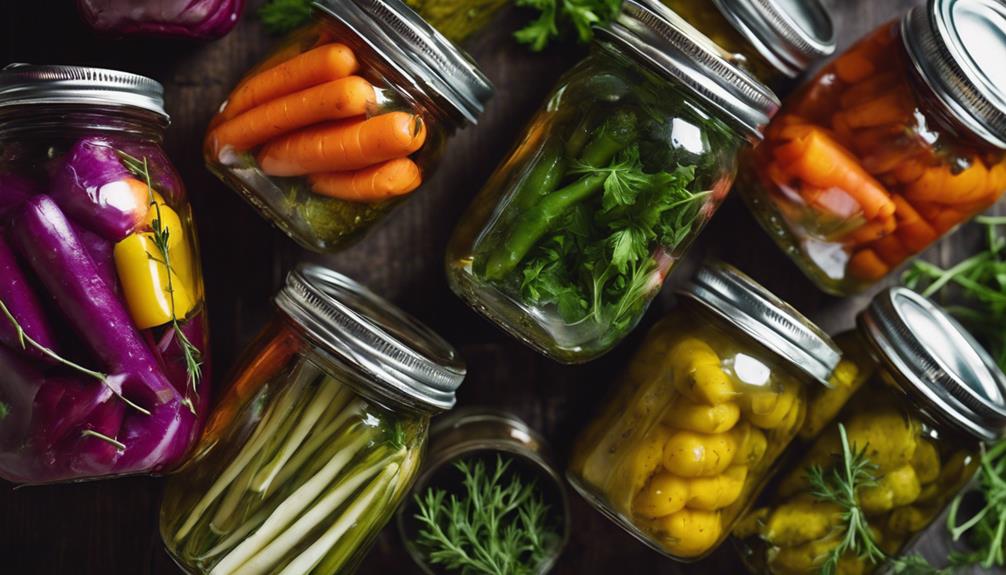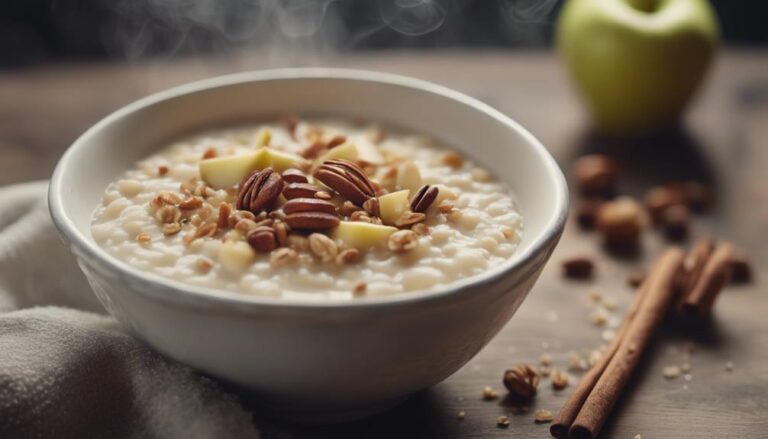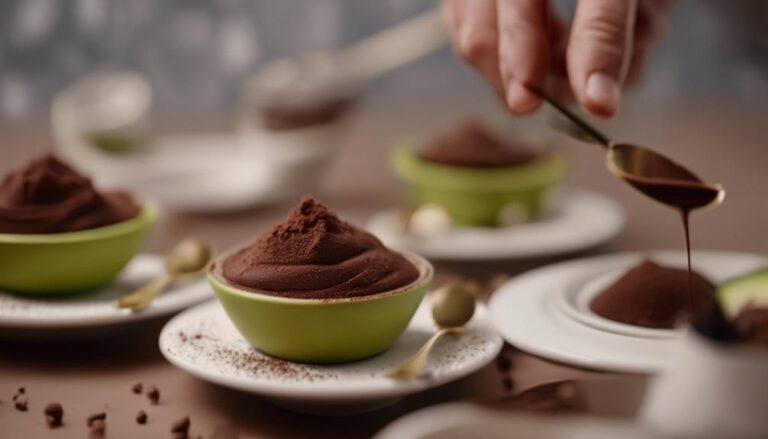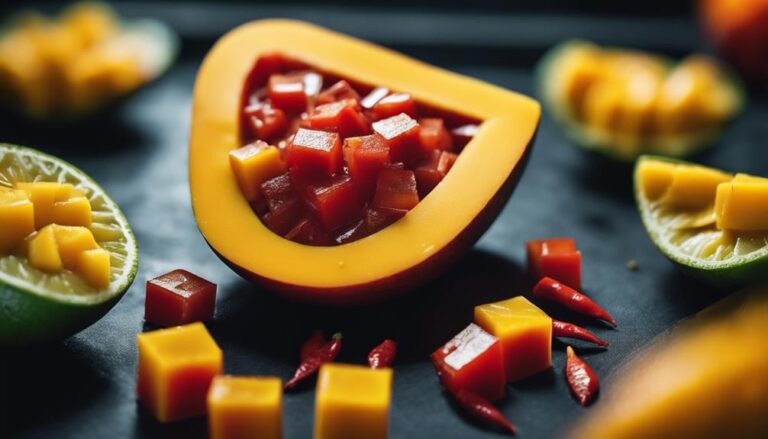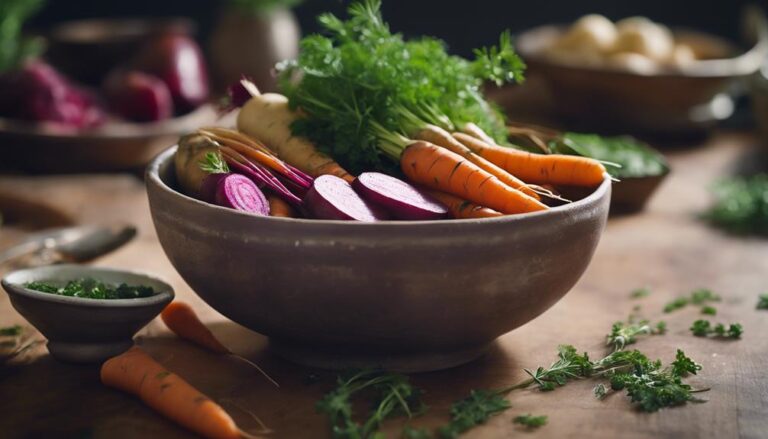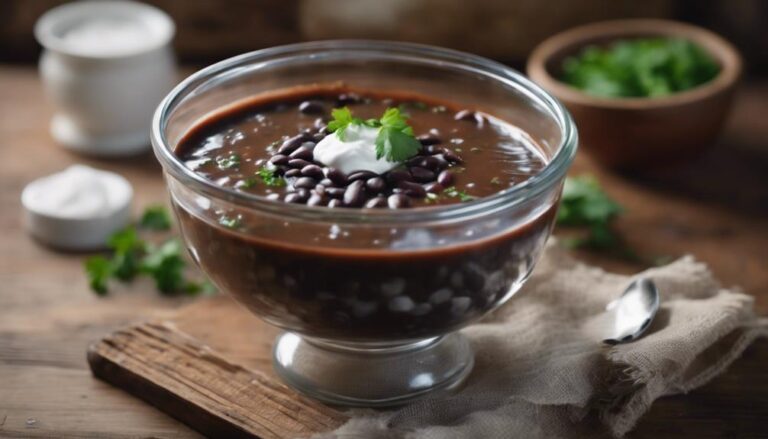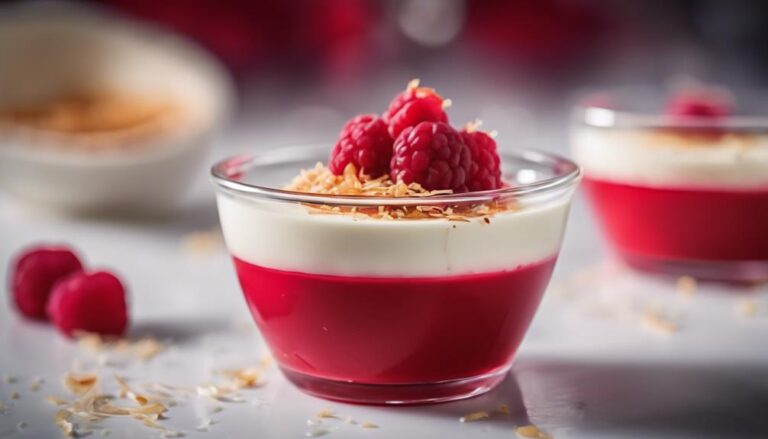Sous Vide Pickled Vegetables Medley
Immerse your taste buds in a flavorful blend of tangy goodness and crunchy perfection with a sous vide pickled vegetables medley. Delight in the precision-controlled temperature that locks in the ideal texture for each vegetable, ensuring a vibrant and satisfying eating experience. This method preserves the crispiness and freshness of the veggies, allowing you to enjoy them for up to 2 weeks. Elevate your meals with this versatile addition, perfect for salads, sandwiches, or as a colorful side dish on any occasion. Uncover the secrets to creating a mouthwatering sous vide pickled vegetable mix that will keep you coming back for more.
What You Will Learn Here
- Sous vide method enhances flavors and textures of pickled vegetables.
- Precise temperature control ensures consistent crunchiness and firmness.
- Vacuum-sealing maintains natural flavors and nutrients in vegetables.
- Water bath cooking preserves the freshness and crunch of vegetables.
- Perfect for adding colorful and flavorful touch to salads, sandwiches, and more.
Origins of Pickling Methods
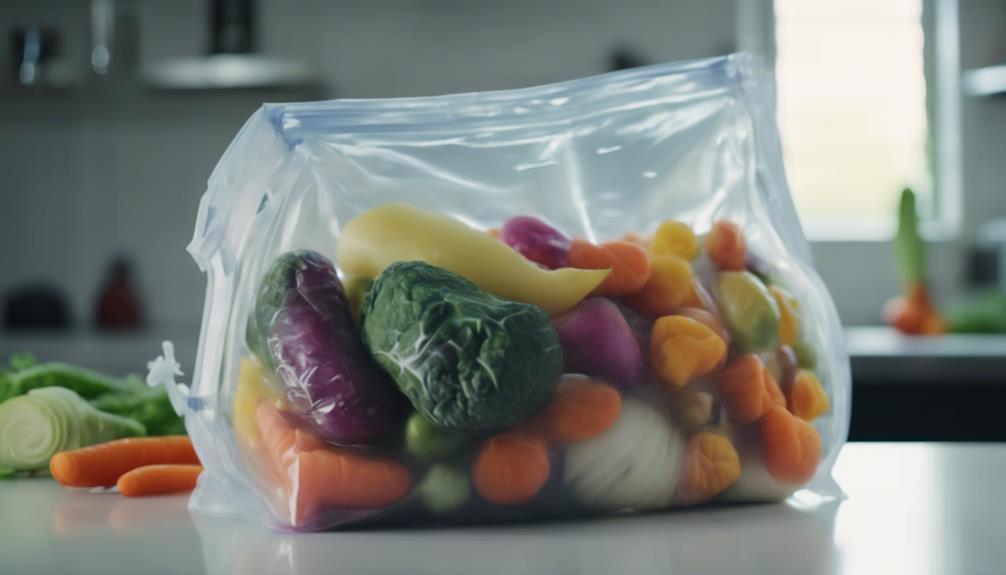
Pickling methods have a rich historical background, with ancient civilizations employing various techniques to preserve foods.
Traditional pickling practices, such as using vinegar and salt solutions, laid the foundation for modern pickling methods.
The evolution of pickling techniques has led to innovations like sous vide pickling, offering enhanced precision and consistency in preserving foods.
Historical Pickling Techniques
Having been an essential method for preserving food for centuries, historical pickling techniques originated from a necessity to extend the shelf life of perishable vegetables. Early pickling practices date back thousands of years, with civilizations like ancient Mesopotamia using fermentation in salt brine or vinegar to preserve vegetables. Before the invention of refrigeration, pickling was a common method to guarantee food longevity. Various cultures worldwide developed unique pickling methods, resulting in a diverse array of pickled foods. The evolution of pickling techniques has led to modern methods like sous vide pickling, which utilizes the water immersion technique to precisely control flavors and textures.
| Historical Pickling Techniques | |
|---|---|
| Origin | Methods |
| Ancient Mesopotamia | Fermentation in salt brine |
| Early civilizations | Pickling in vinegar |
| Pre-refrigeration era | Common method for food preservation |
| Global influence | Diverse pickled foods worldwide |
Traditional Pickling Practices
Traditional pickling practices trace their origins back thousands of years, showcasing early preservation techniques used for extending the shelf life of various foods before the era of modern refrigeration.
Ancient civilizations such as Mesopotamia and Egypt utilized pickling as a method to preserve fruits, vegetables, and meats. The process typically involved creating a brine with salt, vinegar, and spices, which would ferment and preserve the food. Different cultures worldwide developed unique pickling recipes, incorporating local ingredients and flavors.
This early form of pickling laid the foundation for various preservation methods like fermentation. The art of pickling has evolved over time, leading to the creation of diverse pickled dishes and the development of different techniques such as canning and modern sous vide pickling, each offering distinct benefits and flavors.
Evolution of Pickling Methods
As preservation techniques evolved throughout history, early civilizations honed methods of extending the shelf life of foods, laying the groundwork for the diverse pickling methods we employ today.
Pickling, an ancient preservation method dating back to around 2400 BC in Mesopotamia, initially involved fermentation in brine or vinegar, using natural acidity for preservation.
Over time, pickling techniques advanced to include variations such as quick pickling, refrigerator pickling, and sous vide pickling.
Modern pickling methods, like sous vide pickling, rely on precise temperature control to enhance flavors and textures. Sous vide pickling, with its controlled temperature environment, offers a quicker process compared to traditional methods while ensuring the vegetables maintain their crispness and freshness.
Pickling Spices and Herbs
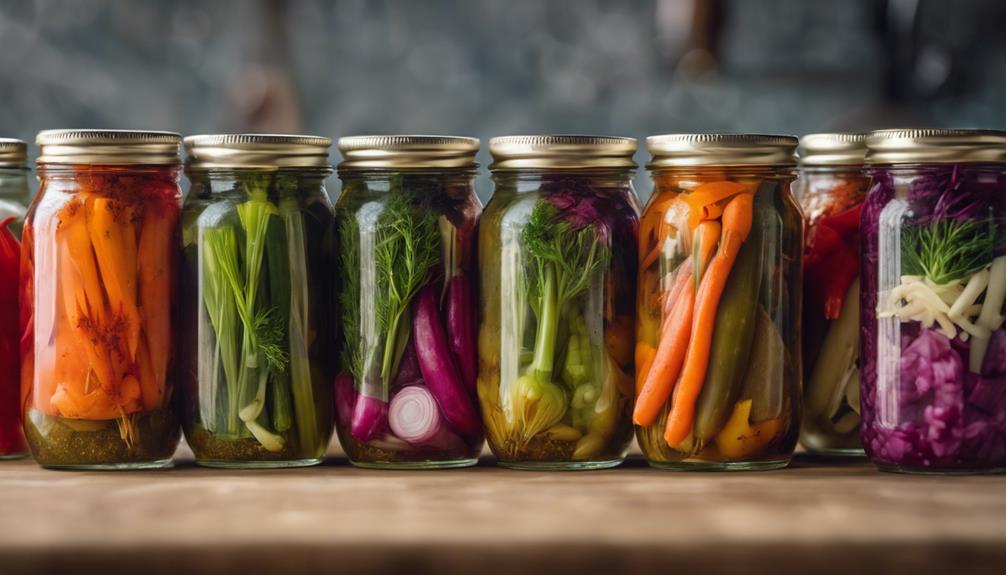
When pickling vegetables, selecting the right combination of spices and herbs is essential to infuse them with complex and flavorful profiles. To enhance the flavor of your pickled vegetables, consider the following key pickling spices and herbs:
- Mustard Seeds: Add a subtle heat and tanginess to the pickling liquid.
- Dill Seeds: Provide a hint of freshness and a slightly sweet flavor.
- Peppercorns: Offer a peppery kick and add depth to the overall taste.
- Coriander Seeds: Contribute a citrusy and slightly floral note to the pickled vegetables.
Sous Vide Pickled Beets
Sous vide pickled beets offer a unique blend of earthy sweetness and tanginess that complements various dishes.
The beetroot sous vide recipe involves vacuum-sealing beets with a pickling brine consisting of vinegar, sugar, and spices.
When combined with sous vide pickled carrots and cucumbers, these vibrant pickled vegetables create a colorful and flavorful medley.
Beetroot Sous Vide Recipe
For an elevated culinary experience, consider preparing beetroot using the precise sous vide method to create delectable pickled beets that maintain their natural flavors and textures.
- Sous Vide Bath: Immerse the beets in a sous vide bath set at the optimal temperature to guarantee even cooking.
- Pickled Vegetables: Watch as the beets absorb the pickling flavors, enhancing their taste while preserving their earthy sweetness.
- Cooking Technique: Sous vide ensures consistent results, yielding tender and flavorful pickled beets every time.
- Versatile Usage: Enjoy pickled beets in salads, sandwiches, or as a vibrant side dish, adding a pop of color and flavor to your meals.
Sous Vide Pickled Carrots
To create Sous Vide Pickled Carrots, start by preparing a basic savory brine infused with white wine vinegar, sugar, salt, and peppercorns. Utilize the Anova Sous Vide Precision Cooker by setting it to 190°F (88°C) for 1 1/2 hours to achieve best results. This method guarantees the carrots maintain their crunchiness while becoming tender and flavorful.
Once cooked, these pickled carrots can be enjoyed immediately or stored in the refrigerator for up to 1 week. Enhance the recipe by customizing it with herbs like thyme or garlic to suit your taste preferences. The sous vide cooking technique guarantees a consistent outcome, making it an easy-to-make and versatile side dish or snack.
Sous Vide Pickled Cucumbers
Achieving ideal Sous Vide Pickled Cucumbers or Sous Vide Pickled Beets requires precise vacuum sealing with a flavorful brine before immersing them in a water bath for perfect crunchiness and taste absorption.
- Seal: Vacuum seal fresh cucumbers with a tangy brine mixture to lock in flavors.
- Immerse: Submerge the sealed cucumbers in a precisely heated water bath for even cooking.
- Absorb: Allow the cucumbers to absorb the pickling brine slowly, enhancing their taste.
- Crunch: The sous vide method preserves the cucumbers' crunchiness, ensuring a satisfying texture.
Sous Vide Pickled Cucumbers offer a delightful crunch and tangy flavor, making them a versatile addition to various dishes or a standalone snack. Just a few simple steps can result in perfectly pickled cucumbers using the sous vide technique.
Sous Vide Vegetable Texture
When cooking vegetables sous vide, the precise temperature control guarantees that they maintain their desired texture, whether it's a crisp crunch or a tender bite.
The sous vide method's precision cooking means you can consistently achieve the perfect texture in your vegetables, avoiding the risk of mushiness or uneven cooking.
This control over vegetable texture allows for a uniform and enjoyable eating experience, preserving the freshness and crunchiness of the produce.
Vegetable Texture Control
For precise control over the texture of vegetables when using sous vide cooking, maintaining consistent temperatures throughout the cooking process is essential. Sous vide cooking excels at preserving vegetable texture, ensuring they retain their natural crunchiness, color, and firmness better than traditional methods.
By precisely regulating the temperature and cooking time, sous vide enables vegetables to reach the desired level of doneness without the risk of becoming mushy or overcooked. This technique not only helps in retaining the nutrients and flavors of the vegetables but also allows for customization of texture based on individual preferences.
With sous vide, you have the freedom to achieve vibrant and appealing vegetable dishes by fine-tuning the cooking parameters to control the texture to perfection.
Sous Vide Precision Cooking
Maintaining precise temperature control throughout the sous vide cooking process is essential for achieving the ideal texture of vegetables, ensuring consistent crunchiness and firmness in every bite.
By vacuum-sealing vegetables and cooking them in a sous vide water bath at specific temperatures, you can control the level of doneness with precision. This method guarantees that the vegetables are evenly cooked, preserving their natural flavors and nutrients.
Sous vide cooking eliminates the risk of overcooking or undercooking, resulting in perfectly firm vegetables. The controlled environment of the water bath allows for uniform cooking from edge to edge, ensuring that each vegetable piece retains its desired texture.
With sous vide precision cooking, you have the freedom to create pickled vegetables with a satisfying crunch in every bite.
Consistent Vegetable Crunch
To achieve a consistent crunch in your pickled vegetables, precise temperature control through sous vide cooking is essential.
When using a water bath in sous vide cooking, maintaining the exact temperature specified for the vegetables is vital for achieving a consistent vegetable crunch.
The precise temperature control guarantees that the vegetables are evenly cooked throughout, preserving their natural texture and crunchiness.
By immersing the vegetables in a water bath set at the precise temperature, you can prevent them from becoming mushy, ensuring a delightful crunch in your pickled vegetables.
This controlled cooking environment offered by sous vide cooking results in pickled vegetables with a unique texture experience, striking a perfect balance between crispness and tenderness.
Final Thoughts
In conclusion, the sous vide pickled vegetables medley provides a delightful and convenient way to elevate your dishes with a burst of tangy flavors and vibrant colors. Using the water bath method with precise temperature control from devices like the Anova Sous Vide Precision, you can guarantee that your pickled vegetables reach the perfect level of crunchiness and flavor infusion.
After the pickling process is complete, allowing the vegetables to cool to room temperature before refrigerating ensures they maintain their texture and taste for up to 2 weeks. This versatility allows for easy meal prep and the flexibility to enjoy your pickled vegetable medley on various occasions.
Whether as a standalone snack, a colorful addition to salads, a festive touch to holiday tables, or a flavorful component in sandwiches and charcuterie boards, these pickled vegetables offer a delicious and crunchy experience that can be savored immediately or left to enhance in flavor over time.
Frequently Asked Questions
What Is the Best Temperature for Sous Vide Vegetables?
For perfect techniques in sous vide vegetables, aim for 183°F to 190°F. Lower temps like 183°F maintain colors and nutrients, while 190°F yields softer texture. Precise cooking methods guarantee even doneness. Experimenting with temps enhances flavor profiles.
How Do Chefs Quickly Pickle Vegetables?
To quickly pickle vegetables, you can try quick brining techniques for a rapid flavor infusion. Utilize vinegar infusion methods to enhance taste. Experiment with various flavor pairings to create unique combinations that suit your preferences and culinary creations.
How Do You Keep Vegetables Crispy When Pickling?
To keep vegetables crispy when pickling, use vinegar types like white or apple cider vinegar. Employ techniques such as quick pickling or sous vide to preserve texture. Store pickled veggies in the fridge for optimum crunchiness.
Is It Worth It to Sous Vide Vegetables?
When you consider the benefits of sous vide cooking, you'll find that it's worth it for maintaining vegetable texture, infusing flavors, and ensuring precise results. The control and efficiency of sous vide enhance your cooking experience.
Conclusion
To sum up, sous vide pickled vegetables offer a unique and flavorful twist on traditional pickling methods.
By using precise temperature control, the vegetables retain their natural textures and flavors while still absorbing the tangy pickling spices and herbs.
This method allows for a perfectly pickled medley of vegetables that's sure to impress your taste buds.
So next time you're looking to elevate your pickling game, consider giving sous vide pickled vegetables a try.
